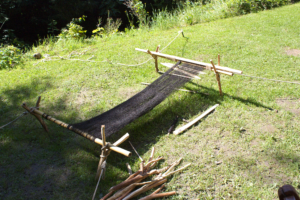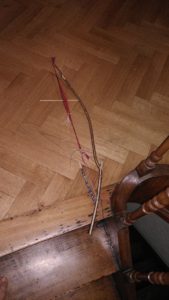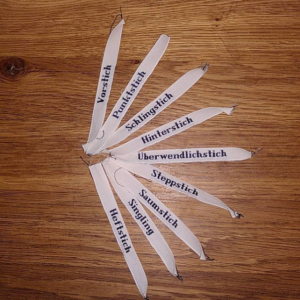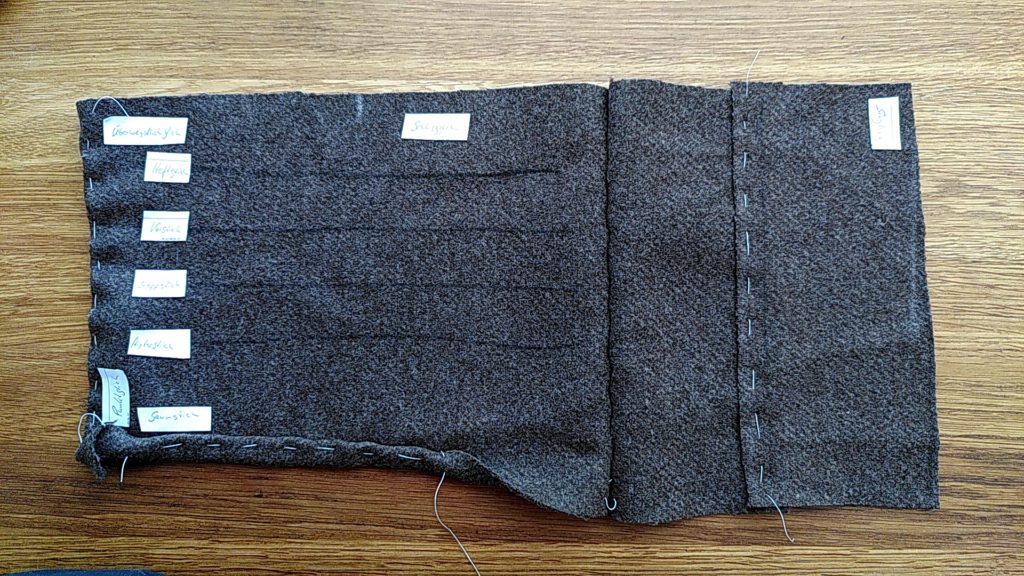After the Textile Forum, there was a little bit of a breather, and then there was - NESAT! Only online, sadly. I had been looking forward so much to a trip to northern Finland with friends, and then hanging out and meeting in person all the lovely people that I only see every three years there... but due to the insecure situation with the pandemic, the conference organisers had opted for the online-only version.
Our presentations were all pre-recorded and available on the conference platform a bit before the conference proper started, and the sessions were discussion-only (with a very short summary of the papers to refresh memories). There was a large variety of topics, and it was really, really nice to at least virtually see the friendly faces of all the colleagues, and to hear about current research.
My personal conference was made so much better and more enjoyable by joining up with a friend to attend together - and we even managed to have some Finnish sweets and some snacks made after Finnish recipes, along with the obligatory too-large amounts of coffee that have to be drunk at every conference.
After the conference, some of the presentations were made public, and they are listed on the NESAT website - the presentation I did with Beatrix Nutz is among them, so feel free to enjoy some slightly weird tablet-woven bands from Early Modern mining sites. I also very much recommend watching the video about medieval seal bag textiles, which I found very, very fascinating!
Our presentations were all pre-recorded and available on the conference platform a bit before the conference proper started, and the sessions were discussion-only (with a very short summary of the papers to refresh memories). There was a large variety of topics, and it was really, really nice to at least virtually see the friendly faces of all the colleagues, and to hear about current research.
My personal conference was made so much better and more enjoyable by joining up with a friend to attend together - and we even managed to have some Finnish sweets and some snacks made after Finnish recipes, along with the obligatory too-large amounts of coffee that have to be drunk at every conference.
After the conference, some of the presentations were made public, and they are listed on the NESAT website - the presentation I did with Beatrix Nutz is among them, so feel free to enjoy some slightly weird tablet-woven bands from Early Modern mining sites. I also very much recommend watching the video about medieval seal bag textiles, which I found very, very fascinating!




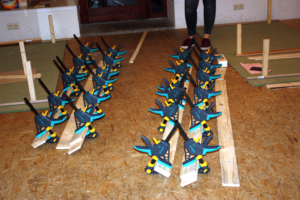 Putting together the two uprights - since we had the luxury of a lot of clamps, we used them. The boards are glued together, and then secured additionally with a few screws.
Putting together the two uprights - since we had the luxury of a lot of clamps, we used them. The boards are glued together, and then secured additionally with a few screws.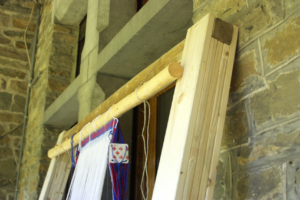 The upper part of the loom, with the square end of the round beam sitting nice and snug in the uprights. For the first test, another beam with a weave already attached was used - for "proper" weaving, you'd attach your weave to the beam directly or via a narrow slat or rod that the starting border has been stitched to.
The upper part of the loom, with the square end of the round beam sitting nice and snug in the uprights. For the first test, another beam with a weave already attached was used - for "proper" weaving, you'd attach your weave to the beam directly or via a narrow slat or rod that the starting border has been stitched to.